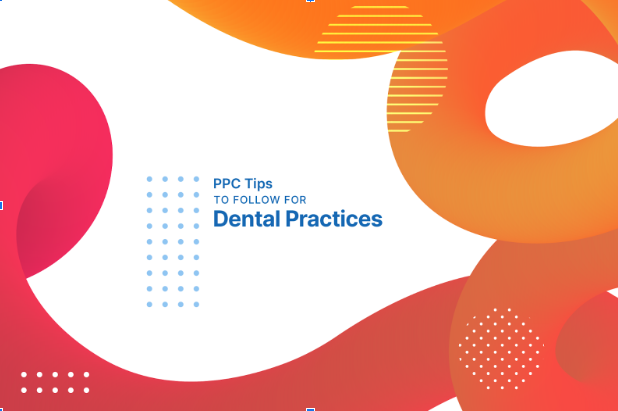Whether you are an established dentist or a new one, coming across a steady flow of patients is not easy in this competitive dental market. With dental PPC, you can easily establish your position in the local dental market, even if you are a newbie. According to a report by Bright Local, 97% of consumers refer to online searches for local businesses and services. So, if you want to grow your practice, your online visibility is just as important. But, how does PPC for dentists work? If you are new to online advertising, our guide will help you with our strategies to make your practice shine.
What Is Dental PPC?
Dental pay-per-click advertising, or dental PCC, is a dynamic digital marketing strategy tailored for dentists. You have to craft and deploy online advertisements across platforms like social media and Google Ads. Through targeted bidding on specific keywords such as “teeth whitening” or “dental implants,” practitioners only get charged when users click on their ads. This precision targeting not only boosts website traffic but also increases patient engagement and appointment scheduling.
Why Dentists Need PPC Advertising
For dentists aiming to have a thriving practice, attracting new patients is crucial. PPC advertising offers a tailored and efficient method to reach potential patients online. Here’s how PPC campaigns can benefit dentists:
1. Targeted Demographic Reach
PPC empowers dentists to tailor campaigns to every stage of the sales funnel, targeting audiences based on demographics, interests, and location. This precision ensures that ads resonate with audiences actively seeking dental services.
2. Enhanced Online Visibility
With dental PPC, dentists can ascend to prime positions in search engine results, bolstering online visibility and accessibility to potential patients.
3. Measurable Results
PPC campaigns offer real-time analytics, enabling dentists to track clicks, impressions, and conversions. These insights inform iterative campaign optimization, maximizing returns on investment.
4. Cost Control
By adopting a pay-per-click model, dentists exercise full control over advertising expenditure, paying solely for ad clicks. This cost-effective approach optimizes resource allocation and enhances lead generation.
Step-by-Step Process of PPC Advertising Campaign
If you want to have a successful dental PPC campaign, it is important that you have a detailed plan in place. Let’s break down the process into actionable steps:
- Set Clear Goals: Define your campaign objectives, whether it’s increasing appointments or promoting specific services, to tailor your PPC strategies accordingly.
- Decide Your Budget: Determine a realistic budget aligned with your practice’s financial situation and campaign objectives. This ensures optimal resource allocation and cost-effectiveness.
- Research Keywords: Conduct thorough keyword research to identify high-impact keywords relevant to your services. This step lays the groundwork for targeted ad campaigns.
- Analyze Your Competition: Gain insights from competitors’ strategies to finetune your approach and identify untapped opportunities.
- Bid Wisely: Strategically allocate bidding budgets to maximize ad placements while minimizing costs. Focus on low-competition keywords to optimize ROI.
- Target Local Areas: Use geo-targeting features to reach local audiences, enhancing your campaign’s relevance and driving foot traffic to your practice.
- Create Compelling Ads: Craft captivating ad copies that highlight your unique selling propositions (USPs) and encourage potential patients to take action.
- Monitor and Adjust: Continuously monitor dental PPC campaign performance and adjust strategies based on real-time data insights. This agile approach ensures your campaign is promoting your practice effectively.
6 Dental PPC Strategies To Generate More Leads
- Highlight What Makes You Unique: Showcase your practice’s unique offerings and USPs to set yourself aside from competitors.
- Organize Your Ads Well: Maintain a structured approach to ad organization, facilitating streamlined management and accurate reporting.
- Use the Right Keywords: Target keywords that align with your practice’s services and resonate with your target audience in dental PPC.
- Encourage Phone Calls: Optimize ad extensions to facilitate easy access to your practice via phone calls, driving lead generation and conversion.
- Maximize Ad Space: Utilize ad extensions to augment ad content and convey additional information, enhancing visibility and engagement.
- Create Landing Pages: Design dedicated landing pages tailored to your ad content, ensuring a seamless user experience and facilitating conversion.
Avoiding Common Dental PPC Pitfalls
Steer clear of these common dental PPC mistakes to maximize campaign effectiveness:
- Undefined Goals: Set clear campaign objectives to align PPC strategies with business goals effectively.
- Neglecting Keyword Research: Conduct thorough keyword research to optimize ad targeting and maximize relevance.
- Overlooking Negative Keywords: Integrate negative keywords to filter out irrelevant traffic and enhance ad efficiency.
- Inadequate Ad Copy and Landing Pages: Craft compelling ad copies and optimize landing pages to enhance user engagement and drive conversions.
- Ignoring Quality Score: Monitor ad Quality Score to optimize ad relevance and enhance campaign performance.
- Neglecting Competition Analysis: Stay abreast of competitors’ PPC strategies to refine your approach and maintain competitiveness.
Conclusion
If you are a dentist trying digital marketing for the first time and want faster growth, pay-per-click advertising is a great strategy to try. But, before opting for dental PPC, you mustn’t exceed your budget too quickly. Furthermore, if you don’t optimize your ads properly, you will waste your money completely. We would recommend finding an experienced marketing agency to set up and manage your PPC marketing campaign for the best results.



